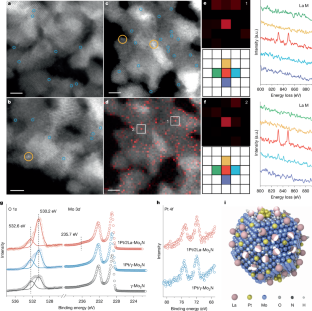2025-02-21 中国科学院(CAS)
<関連情報>
- https://english.cas.cn/newsroom/research_news/phys/202502/t20250224_902439.shtml
- https://pubs.acs.org/doi/10.1021/acs.nanolett.4c06524
自己適応型電気化学的還元における選択的バイメタル原子触媒のハイスループット・スクリーニング High-Throughput Screening of Selective Bimetallic Atomic Catalysts for Self-Adaptive Matched Electrochemical Reduction
Zong-Yin Song,Pei-Hua Li,Yong-Yu Li,Meng Yang,Jing-Yi Lin,Bo-Ping Xiong,Rui-Ze Xia,Xin Cai,Wanchun Duan,Shi-Hua Chen,Lina Li,Wen-Qing Liu,Xing-Jiu Huang
Nano Letters Published February 7, 2025
DOI:https://doi.org/10.1021/acs.nanolett.4c06524
Abstract

Due to the impediments of spatial and temporal resolution, the comprehension of microdynamic processes still remains limited, which seriously hinders the advancement of catalyst regulating and the expansion of application. Herein, the efficient selective bimetallic atomic electrode interface was cultivated via high-throughput screening, achieving self-adaptive parallel electrochemical reduction of Cu(II) and As(III). Combined in situ X-ray absorption fine structure (XAFS) spectroscopy and coordination field theory verified the Ni–Cu specific energy level matching promoted by permitted d–d transition and also reproduced the microscopic dynamic reduction process. Additionally, it was discovered that the Fe–As specific bonding and energy barrier of the smallest potential-determining step (1.40 eV) were derived from the linear shift of the main s and p peaks of the key arsenic intermediates to the high-energy orbital. This work offers insights into transient reaction dynamics by in situ methods and theoretical simulations, which broadens the design of multisite atomic catalysts.



